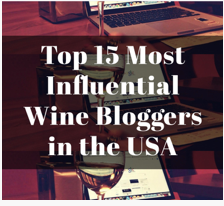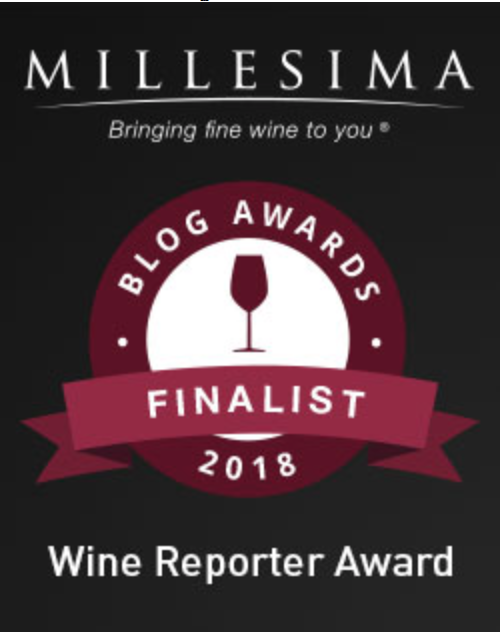A week ago Saturday, I invited a few writers here in Houston to my house for what I believe to be the largest annual blind tasting of American True Rosés in the country.
What, one might ask, is a “True Rosé“?
Well, there are essentially three ways to make a rosé wine. The first, which is rarely practiced outside of sparkling wine production, is a simple blend of red wine and white wine. The second, which is widely practiced around the world, is called the “Saignée Method” where shortly after a red grape crush, a portion of the grape juice (after brief contact with the skins) is bled off (“saignée” means “bled” in French). This bled-off wine is then vinified as if it were a white wine.
The third option is what I call a “True Rosé.” In this process, the grapes are raised, picked, and processed with the idea of making rosé in mind. True Rosés are therefore not a byproduct of red wine production, they are intentionally or purposefully made. They are True Rosés.

All 64.
A couple of years ago, a few days before The World’s Largest Blind Tasting of American True Rosés I got into a rather heated argument on Twitter with two Master Sommeliers worlds away (one, who literally wrote a book on rosé, was in the UK and the other, who made a rosé by blending red and white wine [a practice that is practically unheard of outside of Champagne] was in Australia). They both took exception to my use of the term “True Rosé” to characterize an approach to making rosé that otherwise does not have an agreed-upon term to describe it.
As I have mentioned before, the term saignée is largely understood and accepted to describe what a True Rosé is not. (For those just joining, a saignée rosé is a byproduct of red wine production where, after a brief maceration, a portion of the juice is “bled off.” Until relatively recently, that bled-off juice was either sold off as bulk wine or simply let run down the drain. This is done to further concentrate the remaining juice on the skins and today, to make a rather quick rosé. The problem is that the juice was intended to make red wine and is thus often a bit lacking in acidity which is perhaps the defining characteristic of a good rosé.)
Their collective contention? By using the adjective “true” I was inherently implying that all other rosés were “false.” While I understand their position, I tried to explain (and by their responses, it was largely unsuccessful) that the word “true” has many definitions such as an “ideal” (true love) or “consistent” (true to character) or even “narrow” (in the truest sense).
They did not seem swayed by my argument as they remained fixated on “if something is not true, then it must be false.” In a desperate attempt, I mentioned the concept of a bicycle wheel being “true” or “out of true” but that landed like a lead zeppelin.
Look, there are really good, even outstanding saignées out there (one of my absolute favorite rosés is a saignée—Tongue Dancer by James MacPhail), but all other factors being equal, there is no doubt in my mind that rosés that are made intentionally, id est, a True Rosé, are better than those that are byproducts of red wine production.
Feel free to argue with me. Everyone has a right to their own opinion, no matter how wrong it might be.

Getting chilly (hopefully).
A couple of weeks ago, seven of us tried 64 American Rosés, trying to find the best. As promised, I am publishing my actual notes from the tasting, which we tasted in 16 flights of four wines. Here are flights 10-12:
*2021 Balverne Pinot Noir Forever Wild, Russian River Valley, CA: Retail $45. Responsible Bottle (587g; 1lb 4.7oz). Pale pink with a hint of orange, and a lovely, but shy nose with some muted fruit on the nose. Quite fruity and even a bit sweet here, it comes off as a bit disjointed for me. Very Good. 89 Points.
2023 Sokol Blosser Estate Rosé of Pinot Noir, Dundee Hills, Willamette Valley, CA: Retail $28. Medium pink with a lovely cotton candy nose. Nice and tart with really good fruit and a lovely balance. Fantastic. Outstanding. 93 Points.
2022 Pedernales Cellars Over the Moon Rosé, Texas High Plains, TX: Retail $32. Very Heavy Bottle (700g; 1lb 8.7oz). 45% Cinsault, 29% Grenache, 26% Mourvedre. Texas High Plains. Medium to dark in color, seems slightly more orange than pink. The nose is a tad shy, with subtle fruit eventually, verging on sweet on the nose. Candied fruit, quite tart on the palate. A bigger style of rosé, Very Good. 89 Points.
2023 Sébastien Wines, Dry Creek Valley, CA: Retail $30. Ridiculously Responsible Bottle (452g; 15.9oz). Grenache, Syrah, and Mourvèdre. Medium pink color, with more of a tree fruit vibe here, peach and pear. Nice on the palate with decent fruit and nice tartness. Excellent. 90 Points.

2023 Shannon Family of Wines Mother Vine, High Valley, CA: Retail $38. Heavy Bottle (642g; 1lb 6.6oz). Cinsault and Grenache. I have no doubt that they love the bottle, it is beautiful, but…The wine? Very light with more of an orange with a candied nose of melon and lime. Great fruit, really fantastic, tart, lively, lovely. Comes off as a bit sweet due to all of that fruit, but it really is a fantastic wine. Yowza. Outstanding. 95 Points.
2023 Spicewood Vineyards Cinsault Rosé Farmhouse Vineyards, Texas High Plains, TX: Retail $30. Very Responsible Bottle (495g; 17.5oz). Mostly orange in color with maybe a touch a pink. The nose is certainly on the medicinal side and the palate is as well. Good. 86 Points.
2022 Acquiesce Cinsaut Rosé, Lodi, CA: Retail $35. Quite light in color with a muted nose with a hint (?) of fruit. The palate is much of the same. Sure, it’s fine, but “thin” certainly applies. Very Good. 88 Points.
2023 Smith-Madrone Rosé, Spring Mountain District, Napa Valley, CA: Retail $30. Very Responsible Bottle (492g; 17.4oz). 50% Merlot, 50% Cabernet Franc. Quite dark, almost a red with a really fruity nose of blackberry and even a bit of bubblegum. Really rich red fruit on the palate, full-bodied for sure. This is not your normal rosé, pass me a roasted chicken and stand back. Excellent. 92 Points.

The indefatigable Kat René, The Corkscrew Concierge.
2023 Troon Vineyard Druid’s Pink, Applegate Valley, OR: Retail $25. Very Responsible Bottle (479g; 16.9oz). 62% Mourvèdre, 18% Grenache, 8% Cinsault, 7% Carignan, 5% Counoise. Quite light with an intriguing nose of buttered popcorn, with a little medicinal thing going on, but it works? The fruit on the palate is more marmalade then fresh with some good tartness. Very Good. 88 Points.
2023 Calafia Pinot Noir The Princess, Sonoma Coast, CA: Retail $28. Medium pink with just a hint of orange and a lovely, sweet nose with ripe strawberry. The palate is quite fruity and comes off as a bit sweet, but it works due to the tartness. Excellent. 92 Points.
*2022 Justin Vineyards & Winery Rosé, Paso Robles, CA: Retail $22. Very Responsible Bottle (482g; 17oz). I could not find any details about what fruit goes into this wine. Not good. More orange than pink with a very tart nose, more citrus than anything. Fruity on the palate, but a bit flabby with a mineral aspect on the finish. Very Good. 89 Points.
*2021 Tongue Dancer Pinot Noir Rosé, Sonoma Coast, CA: Retail $22. Responsible Bottle (528g; 18.6oz). Tons of color with a jammy, rich nose. Quite full and even big with a bit of spice and tons of fruit and an interesting savory note. Very Good 89 Points.
Flights 1-3 Flights 4-6 Flights 7-9
Note: Wines with one asterisk (*) were second bottles from last year’s tasting.
More coming soon!







